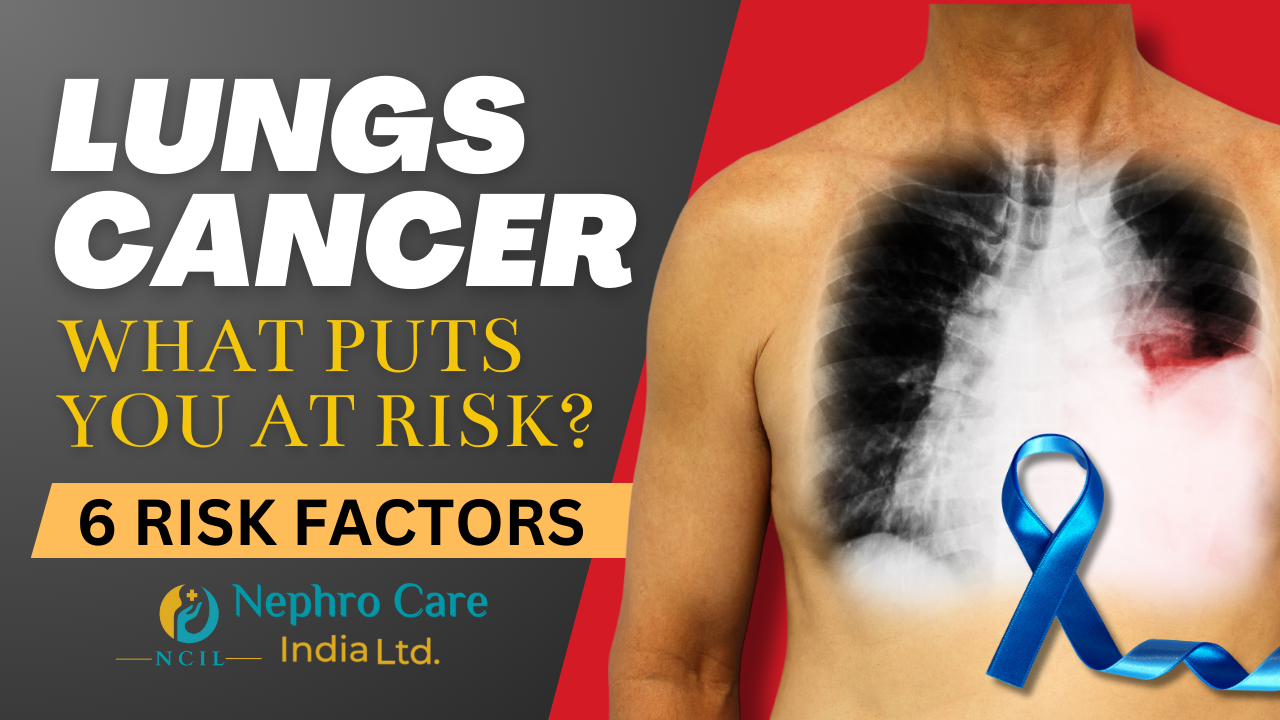
Lung cancer is a challenging disease characterized by the uncontrolled division of cells within the lungs. Normally, cells divide and replicate as part of their regular functions. However, mutations can occur, causing these cells to proliferate uncontrollably. This leads to the formation of tumors, which can interfere with the functioning of the lungs and other organs.

Lung cancer or pulmonary cancer originates in the lungs, typically in the airways (bronchi or bronchioles) or the small air sacs (alveoli). It’s important to distinguish between lung cancers that start in the lungs and those that spread to the lungs from other body parts. The latter are known as metastatic cancers and are named based on their origin.
Non-Small Cell Lung Cancer (NSCLC): The most prevalent form, NSCLC accounts for over 80% of cases. It includes several subtypes:
Small Cell Lung Cancer (SCLC): SCLC is less common but more aggressive. It tends to spread quickly and is harder to treat. The main subtypes are (Basumallik and Agarwal, 2023):
Other Lung Cancers: Other cancers can develop in the lungs, such as lymphomas (in the lymph nodes), sarcomas (in bones or soft tissues), and pleural mesothelioma (in the lining of the lungs). These are treated differently from typical lung cancers.
This refers to cancer that has spread from one lung to the other or to other organs. This stage is more challenging to treat than cancer confined to its original location.
Lung cancer is a deadly disease and may affect anyone but below is the main target group:

However, smoking is the biggest leading cause of pulmonary cancer, both undertaking smoking and being exposed to cigarette smoke are also in a position that exposes them to higher risks. Tobacco smoke has toxic compounds which produce cancer in the pulmonary cells of the body. The risk is associated with the number of times one has smoked and the duration when he or she engages in the smoking process.
Radon, a colorless, odorless, and tasteless noble gas, can infiltrate homes and buildings. Prolonged exposure to elevated radon levels can negatively impact pulmonary health and significantly raise the risk of lung cancer (WHO report 2023).

Workers in some professions are at risk of contracting illnesses from asbestos, arsenic, and other deadly carcinogens like diesel exhaust. High-risk sectors associated with hazardous work environments include construction, mining, and manufacturing industries.
A daily breathing of polluted air over a long period, especially in areas that experience significant industrial and auto choking, can cause pulmonary cancer. These fine particulate matter and other pollutants can deposit on the lung alveoli, which for the sake of this study is considered as dosimetry, and causes progressive cell damage.
Lung cancer can also be hereditary this could be a result of the family history influencing the chances of an individual being affected. Inherited factors such as gene mutations have also been pegged as factors that increase the vulnerability of a person developing this cancer.

Patients with a history of various pulmonary illnesses, which include COPD and TB, have a higher likelihood of getting lung cancer. These conditions bring chronic alterations in the lung tissue architecture and thus make the lungs prone to cancerous changes (Seong et al., 2023).
Lung cancer is one of the most dangerous and deadly forms. Despite medical advancements, it continues to present significant challenges. Here’s why this is particularly perilous compared to other cancers:
Lung cancer is often analyzed at a late stage. Early stages typically show no symptoms, and by the time symptoms like persistent cough, chest pain, breathing difficulties appear, or blood in sputum the cancer is usually advanced. This late detection complicates treatment and reduces the chances of successful outcomes.
Lung cancer, particularly SCLC, grows and spreads rapidly. Its invasive nature allows it to metastasize to other organs before being detected, making localized treatments less effective and complicating overall treatment strategies.
In contrast to cancers like breast or colorectal cancer which have well-established screening procedures, it does not have widely available screening methods. Although low-dose CT scans can identify pulmonary cancer at an early stage in high-risk groups, such as long-term smokers, these screenings are not routinely conducted for the general population, which hampers early detection efforts.
Even after successful treatment, pulmonary cancer has a high risk of recurrence. The disease often causes significant damage to pulmonary tissue, and recurrent lung cancer is typically more resistant to treatment and has a poorer prognosis.
The lungs are essential for respiration, providing oxygen to the body and removing carbon dioxide. Pulmonary cancer can severely impair pulmonary function, leading to respiratory issues and reducing quality of life. As the disease progresses, it can cause complications like pleural effusion, pneumonia, and respiratory failure.
To learn more about pneumonia and lung infections, click the image below 👇

Treating pulmonary cancer usually involves a combination of surgery, chemotherapy, radiation therapy, and targeted treatments. These treatments, while potentially effective, come with significant side effects and complications. Patients often experience severe fatigue, respiratory issues, and other health problems that impact their recovery and quality of life.
Lung cancer, with its various types and stages, presents significant challenges in diagnosis and treatment. Understanding the risk factors, types, and stages of cancer are crucial for effective management and improving patient outcomes. By staying informed and seeking early intervention, individuals can better navigate the complexities of this serious disease.
Want to strengthen your lung health? Check out our course, “Boost Your Lungs” and learn practices to keep your lungs active and healthy.🫁🫁
References: